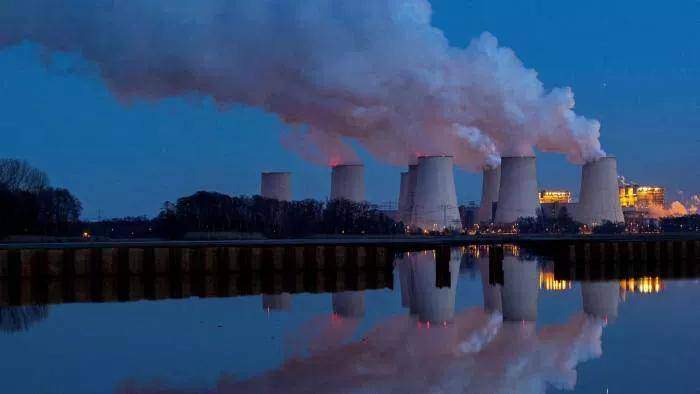17年前,中国经历了一场贯穿全年、蔓延全国的电荒。在这场严重的电力危机刺激下,中国电源投资建设
进入了一段高速发展时期。为什么近20年后的今天,大面积电力供应紧张再度出现?
Seventeen years ago, China experienced a power shortage that ran throughout the year and spread across the country. Stimulated by this severe power crisis, China’s power investment and construction has entered a period of rapid development. Why is the shortage of large-scale power supply appearing again today, nearly 20 years later?

事实上,在过去十几年里,电网每到夏季都要经受“迎峰度夏”挑战。中国的地理环境特性也决定了每年都会受天气影响,出现降温负荷暴涨下的用电负荷尖峰时段。除了季节性因素和异常高温天气影响外,今年全国较大范围的电力供应紧张主要是电力供应不足造成的。面对用电负荷的不断增长,各地区陆续出台有序用电、错峰用电、季节性尖峰电价等政策,部分地区还采取高耗能企业限电停产的政策。“拉闸限电”再度回到全社会的视野之中。
In fact, in the past ten years, the power grid has to undergo the challenge of “peaking summer” every summer. Facing the continuous growth of electricity load, various regions have successively introduced policies such as orderly electricity consumption, off-peak electricity consumption, and seasonal peak electricity prices. “Power cut off” once again returned to the vision of the whole society.
去年,在中国的几个省份,许多生产工厂的电力供应被切断,给运营或供应链以及工人的安全带来了一些问题。 今年我们面临着类似的,甚至可能更严重的情况。
在“碳中和”大潮下,风电、光伏的投资建设步伐无疑会大大加快。但如果电力系统灵活调节资源不能快速增长,电力系统局部供需紧张的状况仍然难解。在“双碳”目标下,彻底告别电力结构性的短缺,我们就必须同时满足“能源的环境友好(即清洁能源)”、“能源供给稳定安全”这两个条件。这也意味着我们放弃“能源价格低廉”这一限定条件,也就是更充分的电力市场化。电力价格的充分市场化或许会推高终端用户的用电成本,但也可以通过积极的价格引导,让用户根据自身情况调整在尖峰时段的用电行为。碳中和是中期目标,提高能源利用效率,降低消费效率,不仅是双碳路径上的一步,也是迫切的短期需求。
Last year, in several provinces in China, many production plants were cut off from power, creating problems for operations, supply chains and the safety of workers. This year we are already facing a similar, possibly even more serious, situation.
Under the tide of “carbon neutrality”, the pace of investment and construction of wind power and photovoltaics will undoubtedly be greatly accelerated. However, the adjustment resources of the power system are not enough, the situation of local supply and demand in the power system is still difficult to solve.
Under the “dual carbon” goal, to bid farewell to the structural shortage of electricity completely, it’s necessary to simultaneously satisfy the two conditions of “environmentally friendly energy (i.e. clean energy)” and “stable and secure energy supply”.
Carbon neutrality is a medium-term goal. Improving energy utilization efficiency and reducing consumption is not only a step on the dual-carbon path, but also an urgent and necessary short-term need.

面对当今紧迫的能源需求,仲欧脱碳科技 CNEUCN 在其科学委员会成员(学术专家和学者)及其行业合作伙伴的支持下,制定了一种综合方法来支持:
- 地方政府和工业园区适当制定能源短缺应急计划。
- 企业实体面对紧急事件并通过多层次的行动来解决它。
提议的方法分为五个主要活动:
- 评估
- 设计、施工、改造
- 运营
- 碳抵消
- 认证
In the face of today’s urgent energy needs, CNEUCN, with the support of its Scientific Committee members (academic experts and scholars) and its industry partners’, developed an integrated approach to support:
- Local Governments and Industrial Parks to properly draw energy shortage emergy plans.
- Corporate entities to face the urgent matter and solve it by several level of action.
The proposed apprach is divided into five main activities:
- Assesment
- Design, construction, renovation
- Operation
- Carbon offset
- Certification

即要采取的行动将是
1. 通过以下方式提高能源效率:
a) 建筑优化:
– 棕地(建筑围护结构、楼宇自动化系统等)
– 绿地(低碳设计,嵌入式和运营)
b) 实用程序:
可再生能源/公用事业供应的低碳技术(即地源热泵等)/高效运行/公用事业分配优化(基于需求和定价的电力/热/冷存储)
c) 整个工业生产线的流程
2. 绘制企业手册,优化节能和碳中和路径的整体工作流程
3. 了解和利用能源和碳市场 (利用不断增长的机会/预期通过电力市场/ETS 和碳配额获取可再生能源的限制
4. 考虑绿色认证
经过认证的建筑比标准建筑节能 25% 到 45%。认证过程提供了一个强大的框架,可以根据其占用模式和能源需求不断优化建筑物的基础设施。
Namely the actions which could be taken will be:
1. Improvements of energy efficiency by:
a) Building optimization of:
– Brownfield (building envelope, building automation system, etc)
– Green field (Low carbon design, both Embedded and Operational)
b) Utilities:
Renewable / Low carbon technologies for utilities supply (i.e. ground source heat pumps, etc) / High efficiency performance operation/Optimization of utilities distribution (storage of power/heat/cool base on needs and pricing)
c) Processes all along the industrial production line.
2. Draw a corporate handbook for optimization of the overall work procedure in the path towards energy saving and carbon neutrality
3. Understand and leverage energy and carbon market (taking advantage of growing opportunity / anticipate constraints to source renewable energy through power market / ETS and carbon quotas)
4. Consider green certification
Certified buildings use between 25% and 45% less energy than standard buildings. A certification process provide s a robust framework to continually optimize the building’s infrastructure in relation to its occupancy patterns and energy demand.
如想了解更多信息和更多详情,请联系[email protected]
For more information and further details please write to: [email protected]
仲欧脱碳科技有限公司中欧碳中和可持续城市发展平台项目将由为此项目成立的同名私营公司运营,旨在通过聚集各方优势,针对每一个课题制定出量身打造的解决方案,以全面和包容的工作方式为中国的碳中和之路添砖加瓦。
仲欧脱碳科技 有限公司该平台将发挥积极和创新的作用,为实现碳中和所需的构想、塑造、设计和实现转型提供服务。
China Europe Carbon Neutral Technology aims to support and substantially contribute to China’s path towards carbon neutrality in a holistic and inclusive way by gathering all the stakeholders and creating solutions for each challenge.
China Europe Carbon Neutral Technology will play an active and innovative role in providing services to conceive, shape, design and accomplish the transitions needed to achieve carbon neutrality.
